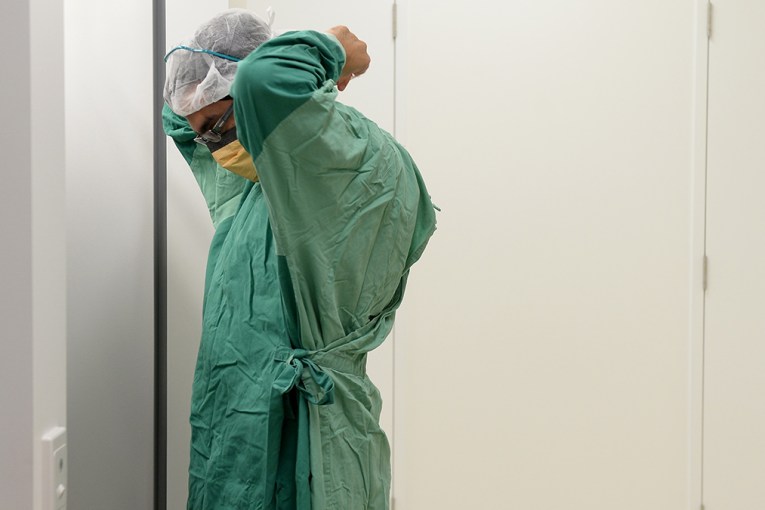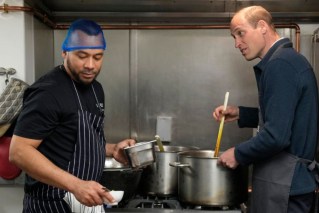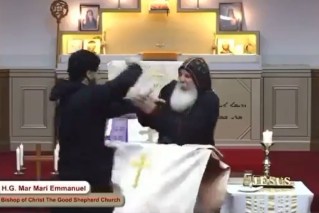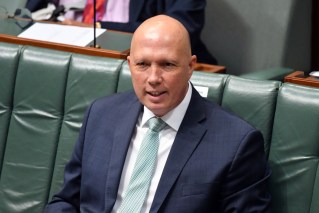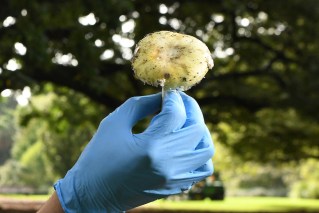Witnesses prosecutors believe may have come face-to-face with the Claremont serial killer
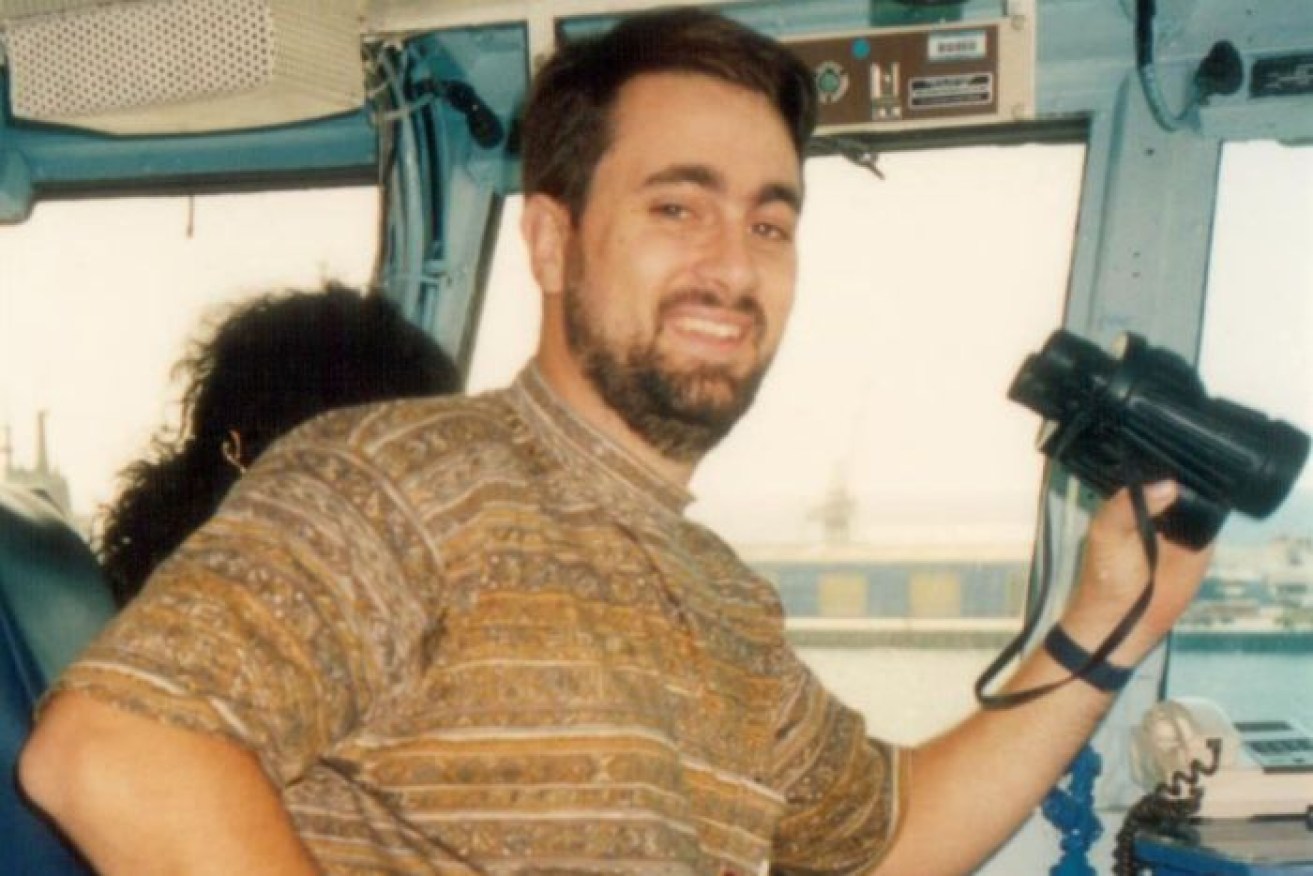
Accused murderer Bradley Robert Edwards allegedly used his Telstra car to abduct his victims. Photo: Supreme Court of WA
They were young, affected by alcohol and just trying to get home after nights out with friends at popular pubs and clubs in the affluent Perth suburbs of Claremont and Cottesloe in the mid-1990s.
But unlike Sarah Spiers, Jane Rimmer and Ciara Glennon, the women who testified this week at the trial of Bradley Robert Edwards for the so-called Claremont serial killings made it home alive.
They were lucky to do so, according to the prosecution.
Six women now in their 40s and one in her 60s gave evidence in the WA Supreme Court that they had been offered lifts home by a man driving a white car or van, most of them bearing Telecom or Telstra insignia and matching the description of the work vehicles Edwards drove at the time.

A Telecom van similar to the one issued to Bradley Edwards in the 1990s.
The women are part of what has been dubbed the Telstra Living Witness project, a plan originally formulated by the Macro Task Force after Ms Glennon went missing from Claremont on March 15, 1996.
Macro was the name given to the specialised police unit that would ultimately spend more than two decades investigating the Claremont killings.
Macro detectives thought it was likely the killer would have picked up women and not murdered them, and so they began trying to find “living witnesses” who could provide vital clues about the offender.
Five such incidents have been presented to the trial.
The seven women in question
Annabelle Bushell and Trilby Smith detailed how they were hitchhiking home from the Ocean Beach Hotel in late 1996, something the women often did despite the fact that both Ms Spiers and Ms Rimmer had gone missing after drinking at the same hotel some months earlier.
Intoxicated and trying to get home on a night when taxis were scarce, the pair had their thumbs stuck out as they walked along Eric Street towards Stirling Highway in Cottesloe, when a man driving a white vehicle stopped.
While Ms Smith did not remember whether the car had any markings on it, describing it as a “work vehicle” or “electrical van”, Ms Bushell recalled it as being “like a Camry wagon” or a Holden Commodore station wagon with a Telstra logo on the bonnet.

The two women told how they accepted a lift from a man after leaving the Ocean Beach Hotel. Photo: ABC News/Rebecca Trigger
The women, who got into the vehicle, both described the driver as having neat, short dark hair and tanned skin, with Ms Bushell estimating his age at between 30 and 40.
But Ms Bushell decided to cut the journey short as they drove through Claremont after having “a strong instinct to get out of the car”, so she took the opportunity to jump out and drag her friend from the back seat as the vehicle was stopped at red lights.
Jane Ouvaroff, who testified via video link from the UK, had been at Club Bay View in Claremont in the early hours of a weekend night between November 1996 and January 1997.
After leaving the nightclub, she and her friend Will Robinson met another friend, Mark Nile, and ended up at Rowe Park, where they stopped to rest.
Rowe Park is where Edwards seized a 17-year-old girl in February 1995 after she too had left Club Bay View, abducting her in his Telstra van and taking her to nearby Karrakatta Cemetery, where he violently raped her twice.
Ms Ouvaroff described getting up to seek a lift home and flagging down a white Holden Commodore station wagon she initially thought was a taxi.
The driver offered her a lift and she got in, but soon realised her mistake.
“I understood that it wasn’t a taxi, but I didn’t feel threatened or unsafe … anyway I stayed in the car,” she told the court.
She and her friends were safely delivered home by the man, whom she said had short dark hair and was in his mid 20s to early 30s.
The car, she said, was a white station wagon bearing a Telecom or Telstra logo.
Rebecca Morse and Natalie Clements were among a group of friends who had been at the OBH on the Friday night before Christmas in 1996 after earlier going to a restaurant in Cottesloe.

Rebecca Morse was with Natalie Clements at the Ocean Beach Hotel in Cottesloe in late 1996. Photo: ABC News/West Matteeussen
The group left the pub when it closed around midnight and decided to walk to Stirling Highway after failing to hail a taxi from the hotel.
Like Ms Ouvaroff, the young women also thought a white Holden Commodore with Telstra insignia that repeatedly slowed down and circled them was a taxi, and tried to hail it.
But they did not accept a lift.
Julieanne Johnstone’s brush with a Telstra vehicle late at night came the night after Ms Spiers disappeared, in January 1996, after she had left Club Bay View on her own.
She described waiting at a bus stop on Stirling Highway in Claremont for a taxi, when a man in a Toyota Camry pulled up next to her.

The Toyota Camry Edwards was allocated by Telstra between October 26, 1994 and May 1, 1996. Photo: Supreme Court of WA
She ignored him for a time but when she turned to look in the car, the driver stared wordlessly at her for up to 30 seconds before she challenged him, saying “what?”, and he drove off.
But her description of him appeared wildly different from the other accounts, and the identikit sketch produced by police bears little resemblance to Edwards.
She described a man with “messy” brown curly hair that was longer in the front than the back, wearing a denim shirt and aged between 30 and 35.

A composite image of a person of interest compiled from a range of photographs related to the Claremont investigation. Photo: Supreme Court of WA
Katrina Jones remembered being picked up by a “quite good looking” man on Stirling Highway in Claremont in December 1995, and said he was driving a white van and was “comfortably built” with tanned skin and dark brown hair.
He told her he worked for Telecom or Telstra, she said, and did not have to pay for petrol.
The man said he had been driving around the Cottesloe area looking for “damsels in distress like yourself”.
Sarah Spiers. Jane Rimmer. Ciara Glennon. Three women whose names were etched into Perth’s consciousness more than 20 years ago.
After dropping her at her car in Innaloo, she said he got out of the car, grabbed her arm and tried to kiss her, but left after she told him she held a blue belt in taekwondo.
But under cross-examination, Ms Jones admitted she had initially told police that he had fair hair.
Descriptions ‘broadly consistent’: Prosecutors
The fact that the descriptions of the driver and the vehicle or vehicles he drove did not exactly match was conceded by state prosecutor Carmel Barbagallo SC at the outset of the trial.
But she said they were “broadly consistent” and demonstrated that the same man had been driving around Cottesloe and Claremont, probably wearing a Telstra uniform and “picking off potential prey”.
“The prosecution says the same driver is responsible for the abduction and murders of Sarah Spiers and Jane Rimmer and Ciara Glennon,” she told the court.

Edwards is accused of killing (from top) Ciara Glennon, Jane Rimmer and Sarah Spiers.
The Telstra Living Witnesses also bolstered the case that automotive and clothing fibres found in the hair of Ms Rimmer and Ms Glennon came from Edwards’s work vehicle and clothing, Ms Barbagallo said, and explained why the victims may have been willing to get into a car with him — because it was a work vehicle.
But defence counsel Paul Yovich SC accused Ms Barbagallo of picking and choosing cases to match its argument, and ignoring those which did not.
“We say the Telstra Living Witness project does not have any discerning power in distinguishing the accused as the offender,” he said.
“The behaviour as a whole involved likely a number of different men and some of it involved actively sexually predatory behaviour, as opposed to one incident here where there was a relatively mild sexual advance alleged.
“This proves nothing against him and may even suggest other possible suspects.”
It will be up to Justice Stephen Hall, who is presiding over the trial without a jury, to decide what value the so-called Telstra Living Witnesses are to the case.
